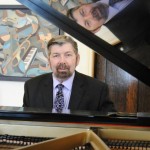Reverberation Characteristics of Architectural Spaces: Touching Mystery
Reverberation characteristics of two [architecturally] contrasting worship spaces were the theoretical basis for this research, centered on participants’ memory (past, present, and future), a theme of aesthetics (as process rather than object-oriented), and the creative imagination as vehicle for participants to articulate their experiences. Themes of awe, wonder, and mystery emerged. The results suggest that reverberation characteristics hold potential to function as a language of mystery, informing the perception of music and addressing its theological significance. We are all challenged to use existing reverberation characteristics more creatively and to factor reverberation characteristics into the design of planned new architectural spaces.
Bruce Wheatcroft, D.Min., has spent most of his working career in the service of the church as a conductor, organist, teacher, and administrator. He holds a D.Min. in theology from St. Stephen’s College, Edmonton, an M.Mus in musicology from the University of Alberta, a B.Mus. in organ performance from the University of Calgary, and the ARCCO diploma from The Royal Canadian College of Organists. He has lectured at undergraduate and graduate levels for the University of Alberta and has taught for the faculty of music at McGill University. He has frequently been heard as a recitalist and conductor for national CBC broadcasts and has performed at national conventions of The Royal Canadian College of Organists. He has held important church music posts in Montréal and Western Canada, is active as an adjudicator, and has developed a distinguished career as a teacher, workshop leader, and lecturer throughout North America.

